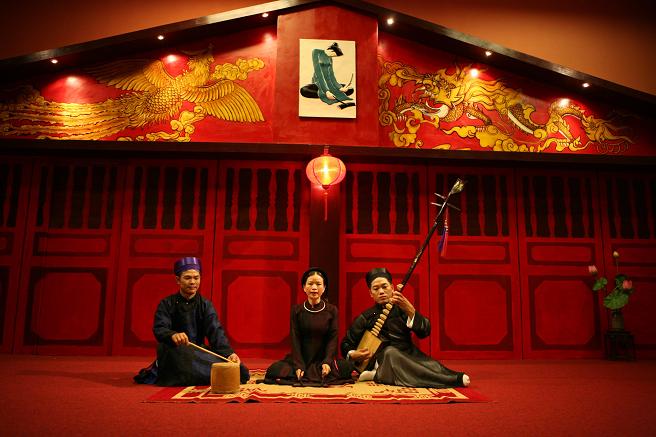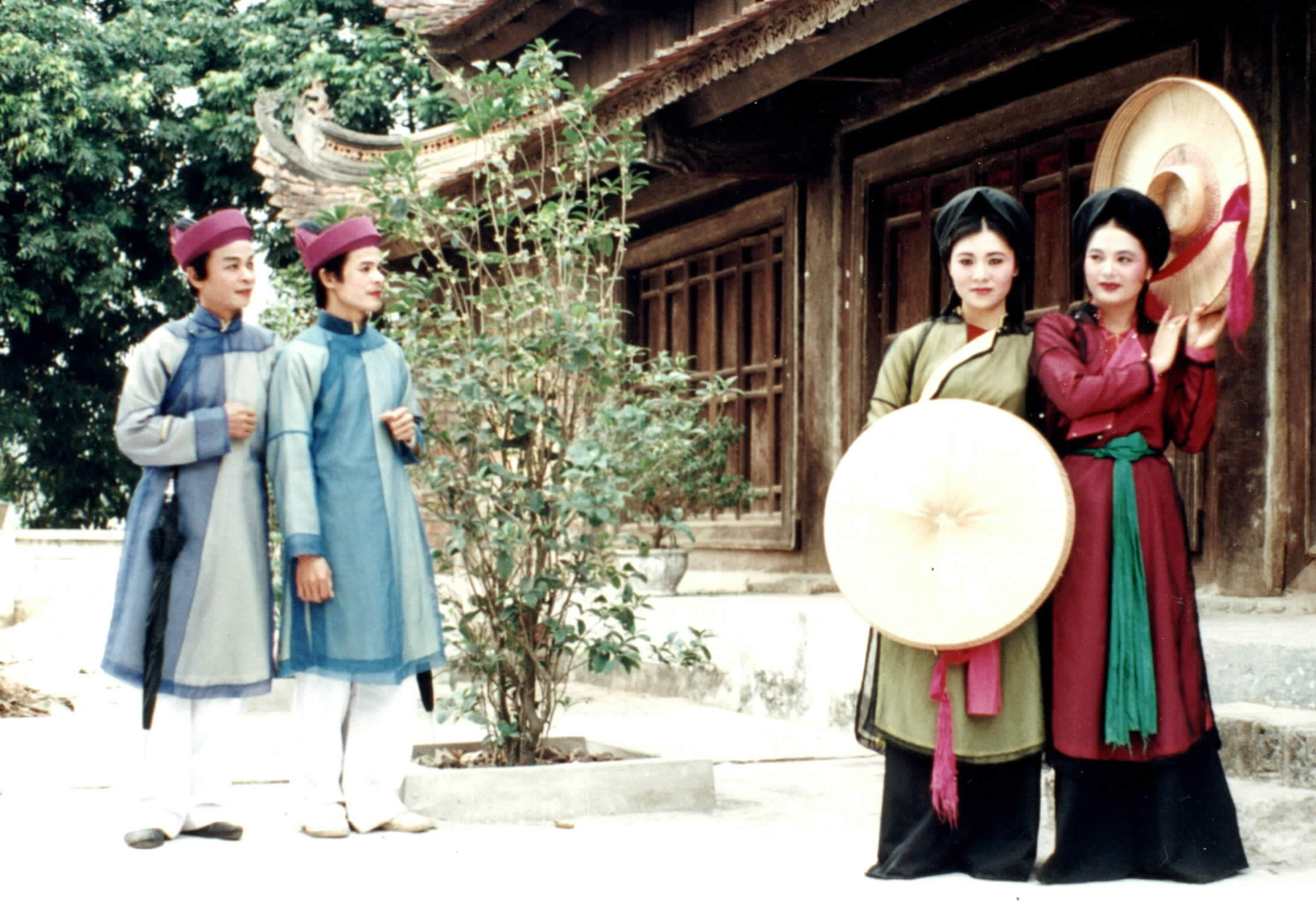1. Hue Royal Court Music
This is an orthodox music genre with 3 elements: music, dance and singing, in which music and dance account for a higher proportion, considered as national music, nearly 1000 years old, used in the ceremonies and rituals of the royal court. It can be said that Hue royal music is the inheritance and development to a new peak of the achievements of Thang Long royal music that was built many centuries ago, and is a unique, scholarly art form of Vietnam.
2. Quan Ho
Bac Ninh Quan Ho folk songs were formed a long time ago, created by the Kinh community in 49 Quan Ho villages and some neighboring villages in the two provinces of Bac Ninh and Bac Giang. The unique feature of Quan Ho is the form of antiphonal singing. The Lien Anh (literally “lien anh”) in traditional costumes of turban and “ao the” (traditional “ao mo ba”) and Lien Chi (literally “lien chi”) in graceful “ao mo ba” and “mo bay” (traditional “ao mo ba”), wearing “conical hats with quai thao” (traditional “conical hats”), sing antiphonal songs together, simple and mellow, in the traditional way without accompaniment but still full of music, expressing the subtle cultural features of Quan Ho people.

3. Ca Tru
Ca Tru is considered a classical music genre in Vietnam that appeared around the 15th century. Ca Tru uses three special musical instruments: Dan day, clapper and drum chau. These three basic instruments are associated with three important characters in a singing performance: Kep (male) - a musician who specializes in playing Dan day; Dao Nuong - a Dao (female) - sings and beats clapper and the mandarin who holds the drum is the one who plays the drum.

4. Xoan singing
Xoan singing - a type of folk song, ritual, custom, converging many artistic elements: music, singing, dancing... of the land of Hung Kings. Xoan singing is another name (misspelled) of the two words Hat Xuan or Ca Xuan; is a singing style used in rituals, customs, and festivals taking place in spring. The beginning is singing and dancing to invite the king to attend the communal house festival with the villagers; followed by hat qua cach - singing songs to congratulate the king, songs about the calendar, history and occupation of the rice-growing people; finally, love songs between Xoan singers and village boys.

5. Amateur music
According to historical documents, Don ca tai tu is an art form originating from Hue royal court music. In which, the word "tai tu" means a talented musician, gifted, knowledgeable about ancient music. Don ca tai tu was introduced to the South from the end of the 19th century. Initially, there was only "dan", later on, a singing form appeared, gradually called "don ca". Don ca tai tu is special in that it is often performed improvisationally, based on the original traditional music, the singer adapts it in his own way. This difference makes the listener always feel new even when listening to the same song.



































